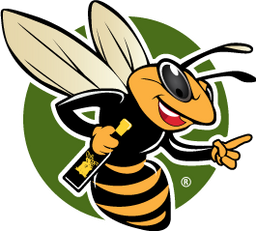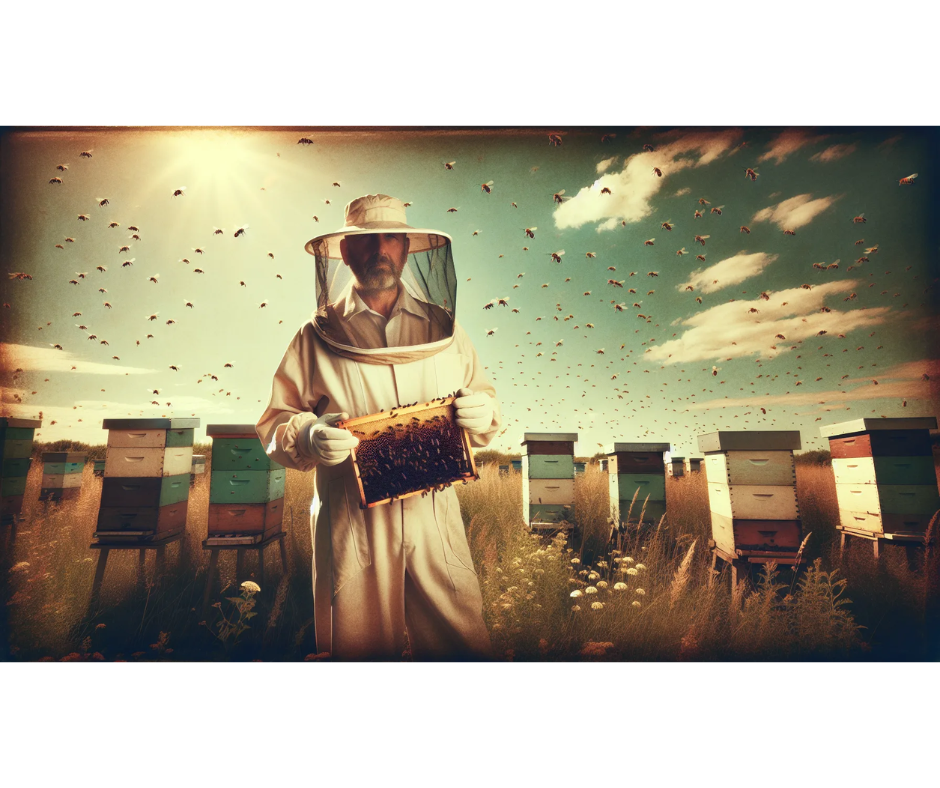When you think of beekeeping, the first image that often comes to mind is a beekeeper clad in protective gear, ensuring safety while managing hives. Among the essential pieces of this outfit, the bee suit hat stands out as a crucial element. Not only does it shield you from stings, but it also enhances your overall beekeeping experience.
A good bee suit hat combines functionality with comfort, allowing you to focus on your bees without worrying about potential hazards. Whether you're a seasoned beekeeper or just starting out, understanding the importance of this gear can make a significant difference in your approach to beekeeping. With the right bee suit hat, you can confidently dive into the fascinating world of bees, knowing you're protected and ready for the adventure ahead.
Benefits of Wearing a Bee Suit Hat
Wearing a bee suit hat provides key advantages that enhance your beekeeping experience. These benefits include protection from stings and improved visibility.
Protection from Stings
A bee suit hat offers crucial protection from bee stings, safeguarding your head and face. Stings can cause pain and allergic reactions, making it necessary to minimize exposure. The hat's design typically includes a veil that covers your face, helping to prevent bees from getting too close. When bees approach aggressively or feel threatened, having a protective layer around your head significantly reduces the risk of being stung. Choosing a high-quality bee suit hat with durable materials contributes to this essential protection. Remember, a comfortable fit keeps you focused on your tasks, allowing you to manage your hives effectively without distraction from safety concerns.
Enhanced Visibility
The design of a bee suit hat enhances your visibility while working with bees. Many hats come with mesh veils that allow for clear sightlines, ensuring you see your surroundings and detailed actions easily. Good visibility helps you monitor bee behaviors and hive conditions closely. Observing how bees interact with their environment aids in making informed decisions during your beekeeping tasks. Selecting a hat that offers wide coverage without restricting your view is crucial. This advantage supports efficiency and safety by keeping you aware of any unexpected movements from the bees.
Choosing the Right Bee Suit Hat
Choosing the right bee suit hat is essential for effective protection while working with bees. Several factors play a role in selecting a suitable hat for your beekeeping activities.
Material Options
Materials used in bee suit hats greatly influence comfort and protection. Common options include cotton, polyester, and nylon. Cotton offers breathability, making it suitable for warm weather and extended use. Polyester provides durability and is often used in hats with detachable veils, which enhance visibility and protection. Nylon is lightweight and water-resistant, providing added comfort during wet conditions. Consider hats with UV protection features to shield against sun exposure. Always check that the fabric is bee sting resistant for maximum safety.
Sizing Considerations
Correct sizing is crucial when selecting a bee suit hat. Hats that are too tight may cause discomfort, while loose hats increase the risk of stings due to gaps. To ensure a proper fit, measure the circumference of your head using a soft measuring tape. Standard sizes include small, medium, large, and extra-large. Some brands offer adjustable straps for a snug fit. A properly fitted hat should sit comfortably above your ears and secure adequately under your chin.
Style Variations
Styles of bee suit hats vary to meet different preferences and needs. Common styles include wide-brimmed hats, hooded designs, and those with detachable veils. Wide-brimmed hats provide extra sun protection and shadow your face. Hooded designs offer integrated veils for simplicity and quick use. Detachable veils allow customization based on the task at hand. Choose a style that complements your beekeeping tasks and personal comfort preferences. Also, consider colors that suit your beekeeping environment, as darker shades may attract more heat in sunny conditions.
How to Properly Fit Your Bee Suit Hat
Fitting your bee suit hat properly ensures comfort and safety while working with bees. Follow these guidelines to achieve an optimal fit.
Adjusting the Hat Size
Choose a hat that fits snugly on your head without causing discomfort. Utilize the sizing adjustment feature, often found with a drawstring or Velcro strap.
- Measure your head using a soft measuring tape. Wrap the tape around the widest part of your head to find the correct size.
- Pull the adjustment strap to tighten or loosen the fit until it feels secure and comfortable.
- Test the fit by moving your head side to side. The hat should stay in place without slipping or creating pressure points.
- Check for adequate coverage ensuring that the brim extends beyond your eyes and face.
Achieving the right size creates a foundation for safety during your beekeeping tasks.
Securing the Veil
Securing the veil properly prevents bees from getting underneath it while also allowing for visibility. Here are steps to ensure proper attachment.
- Align the veil with the hat, ensuring it covers your face and neck appropriately.
- Use the veil attachments, which may include hooks, clips, or elastic bands. Make sure these secure the veil to the hat without gaps.
- Adjust for comfort. The veil should fit snugly against your skin without feeling restrictive.
- Test for movement. Move your head after securing the veil. Ensure it stays in place and allows full visibility.
Securing the veil effectively protects you from stings while providing a clear view of your work.
Maintenance and Care for Bee Suit Hats
Proper maintenance and care for bee suit hats ensure longevity and effectiveness in protecting against bee stings. Following specific cleaning and storage guidelines helps preserve functionality and keep your gear in excellent condition.
Cleaning Instructions
Use mild detergent to clean your bee suit hat. Mix a small amount of detergent with water in a bucket or sink. Submerge the hat in the soapy water for a few minutes. Gently scrub any dirty areas using a soft brush or cloth. Avoid using harsh chemicals or bleach, as these can damage the material. Rinse thoroughly with clean water to remove all detergent. Air dry in a shaded area, avoiding direct sunlight to prevent fading and damage. Ensure the hat is completely dry before storing it. Regular cleaning after use helps maintain hygiene and reduces odor buildup.
Storage Tips
Store your bee suit hat in a cool, dry place away from direct sunlight. Use a hat box or a breathable bag to protect it from dust and insects. Avoid damp areas to prevent mold and mildew growth. Check periodically for any signs of wear or damage. If you notice any issues, repair them immediately to ensure your safety during use. Keeping your hat organized helps prolong its life and maintains its protective qualities. Proper storage techniques contribute significantly to the overall maintenance of your equipment.
Common Issues with Bee Suit Hats
Wearing a bee suit hat provides significant protection, but certain common issues may arise. Understanding these problems allows for better handling and improved beekeeping experiences.
Fogging of the Veil
Fogging occurs frequently with bee suit hats that have veils. When moisture builds up on the veil surface, visibility decreases, causing challenges when working with bees. This problem often happens in humid conditions or when wearing the hat for long periods. To counteract fogging, choose veils with anti-fog features or vents that promote airflow. Use quality materials, such as breathable mesh, to enhance comfort. Adjusting your activity pace can also help reduce moisture buildup. Regularly cleaning the veil decreases fogging as dirt or moisture can contribute to this nuisance.
Poor Fit and Adjustments
Poor fit can lead to discomfort and reduced protection while working with bees. Bee suit hats that do not fit properly may shift during movements, creating gaps where bees could enter. Ensure proper adjustments with features like drawstrings, elastic bands, or Velcro straps. Check the size, ensuring it accommodates your head’s dimensions comfortably. When selecting a hat, try on several styles to find one that fits securely without compromising comfort. Avoid overcrowding the head with excess material, which may lead to sweating or irritations.
Damaged Materials
Wear and tear can occur with bee suit hats after extended use, including tears, fraying, or holes. These damages undermine the hat's protective function. Perform regular inspections to identify any issues before they worsen. Repair small tears promptly by stitching or using fabric patches. If significant damage occurs, prioritize replacing the hat for maximum safety. Store the hat properly in a cool location to prevent material degradation from environmental factors. Regular maintenance and careful handling extend the lifetime of bee suit hats significantly.
Conclusion
Investing in a quality bee suit hat is essential for any beekeeper. It not only protects you from stings but also enhances your overall experience in managing your hives. With the right fit and materials you can work confidently and efficiently.
By choosing a hat that suits your needs and following proper care instructions you'll ensure its longevity and effectiveness. Remember to regularly check for any wear and tear to maintain optimal protection. Embrace the world of beekeeping with the right gear and enjoy the incredible journey of working alongside these fascinating creatures.
Frequently Asked Questions
Why is a bee suit hat important for beekeeping?
A bee suit hat is essential for beekeeping as it provides vital protection for the head and face against bee stings. It allows beekeepers to focus on their tasks without the fear of painful stings, enhancing their overall experience while working with bees.
What are the benefits of wearing a bee suit hat?
Wearing a bee suit hat offers protection against stings, improves visibility through mesh veils, and allows beekeepers to monitor bee behavior easily. This combination of safety and clarity supports better and more informed beekeeping practices.
How do I choose the right bee suit hat?
When selecting a bee suit hat, consider the material options (cotton, polyester, nylon), sizing for a proper fit, and style variations that meet your preferences. Each material provides different comfort and protective benefits, and the right fit is crucial for effective use.
How should I fit a bee suit hat?
To achieve an optimal fit for your bee suit hat, ensure it is snug and adjust it using features like drawstrings or Velcro straps. Make sure the brim offers adequate coverage, and securely attach the veil to prevent bees from entering while maintaining visibility.
How do I maintain and care for my bee suit hat?
To care for your bee suit hat, clean it using mild detergent and gentle scrubbing. Avoid harsh chemicals, and store the hat in a cool, dry place to protect it from dust and insects. Regularly inspect it for any signs of wear and tear.
What common issues arise with bee suit hats?
Common issues with bee suit hats include veil fogging, poor fit, and material damage. Fogging can impair visibility, while a bad fit may lead to discomfort or allow bees to enter. Regularly check for wear and address any damage promptly to ensure safety.



